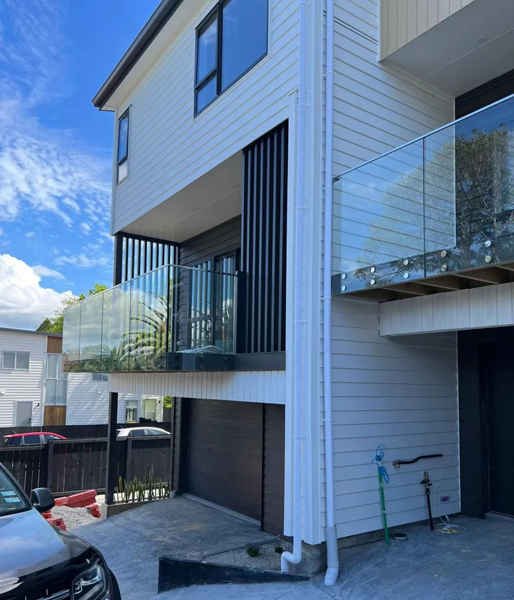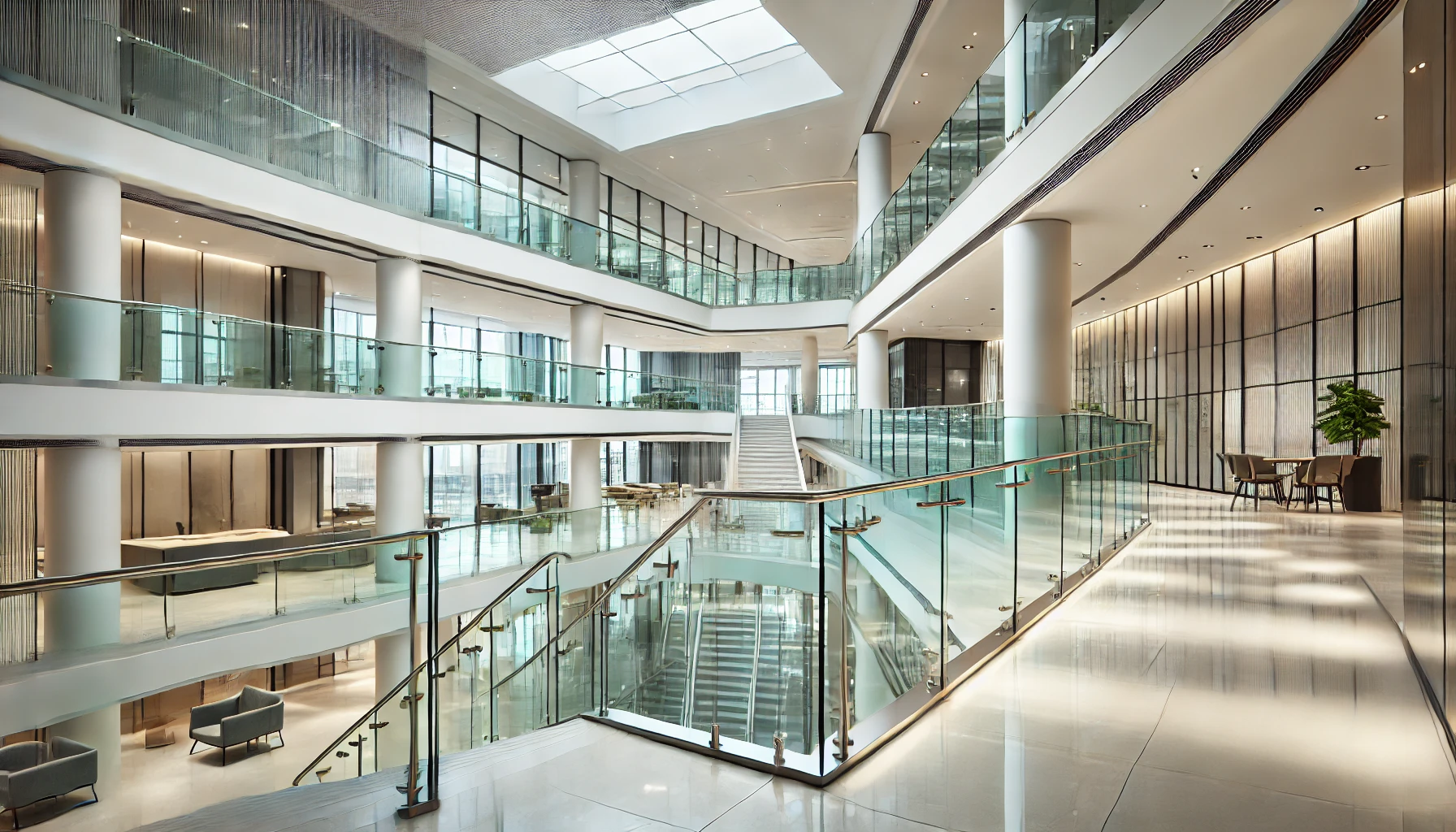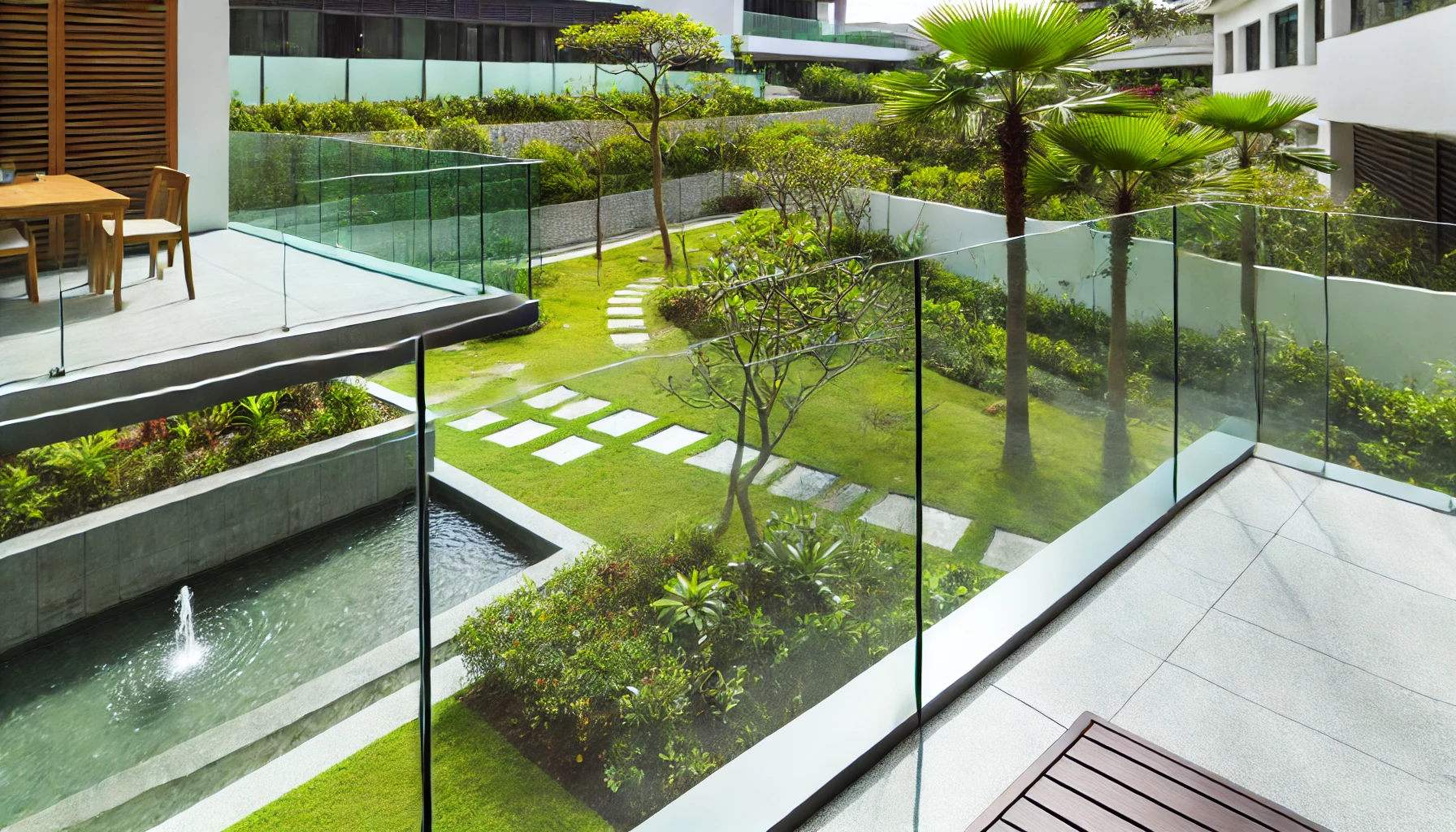Introduction
Glass railings have become a popular architectural element in modern construction, celebrated for their aesthetic appeal, transparency, and ability to create a seamless connection between indoor and outdoor spaces. However, the use of glass in structural applications, particularly as a railing, raises significant safety concerns. Ensuring that glass railings are both beautiful and safe is paramount, requiring a careful balance of design, material selection, and installation practices. This article delves into the safety aspects of glass railings and highlights the essential considerations that must be addressed during their design and installation.
1. Material Selection: The Foundation of Safety
The safety of glass railings begins with the selection of appropriate materials. The two primary types of glass used in railings are tempered glass and laminated glass.
- Tempered Glass: Also known as toughened glass, tempered glass is heat-treated to increase its strength. When broken, it shatters into small, blunt pieces, reducing the risk of injury. Tempered glass is commonly used in glass railings due to its strength and safety properties.
- Laminated Glass: Laminated glass consists of two or more layers of glass bonded together with an interlayer, usually made of polyvinyl butyral (PVB) or ethylene-vinyl acetate (EVA). This interlayer holds the glass pieces together even if the glass is broken, preventing them from falling out of the frame. Laminated glass provides additional safety and is often used in high-traffic areas or in situations where the glass railing is exposed to greater risk of impact.
Choosing the correct type of glass depends on the specific requirements of the project, including the location, expected load, and potential hazards.
2. Glass Thickness: Ensuring Structural Integrity
Glass thickness is a critical factor in the safety and performance of glass railings. The thickness required depends on several factors, including the span between supports, the height of the railing, and the expected loads.
- Common Thicknesses: Glass used in railings typically ranges from 10mm to 21.5mm in thickness. Thicker glass is stronger and can span longer distances between supports, but it also adds more weight to the structure.
- Calculating Thickness: Engineers calculate the required glass thickness based on the loading conditions, including wind loads, impact loads, and the weight of the glass itself. For example, a glass railing installed on a high-rise balcony may require thicker glass than one used in a residential staircase due to the increased wind loads.
Ensuring that the glass is thick enough to withstand the expected loads is essential to prevent breakage and ensure the safety of the railing system.
3. Mounting Systems: Secure Attachment and Stability
The way glass panels are mounted and secured is another crucial aspect of their safety. There are several mounting systems commonly used for glass railings:
- Post and Clamp Systems: In this system, glass panels are held in place by metal posts and clamps. The clamps grip the edges of the glass, and the posts provide structural support. This system is versatile and allows for the use of both tempered and laminated glass.
- Base Shoe Systems: The glass panels are mounted into a base shoe, a metal channel that is anchored to the floor or the edge of the structure. The base shoe holds the glass securely in place and provides a clean, frameless look. This system is popular in applications where a minimalist design is desired.
- Spigot Systems: Spigots are small, discrete supports that hold the glass panels at the bottom. They are often used in frameless glass railing systems, providing both support and a modern aesthetic.
Each mounting system has its advantages and limitations. The choice of system depends on the design requirements, the type of glass used, and the structural support available.
4. Load-Bearing Capacity: Designing for Safety
Glass railings must be designed to withstand various loads to ensure they can safely support the forces they may encounter. The key loads to consider include:
- Wind Load: Wind pressure can exert significant force on glass railings, especially in high-rise buildings or open outdoor spaces. The design must account for wind loads to prevent the glass from flexing excessively or breaking.
- Impact Load: Glass railings are often subject to impact loads from people leaning against them, objects striking them, or even from accidental collisions. The glass must be able to absorb these impacts without breaking or dislodging from its mountings.
- Live Load: This refers to the weight of people leaning or pushing against the railing. Building codes often specify minimum live load requirements for railings, and these must be adhered to in the design.
Ensuring that the glass railing system can bear these loads without compromising safety is critical. Engineers must carefully calculate these loads and design the railing system accordingly.
5. Building Codes and Standards: Compliance for Safety
Glass railings must comply with local building codes and standards, which are designed to ensure their safety. These codes specify requirements for various aspects of glass railing design, including:
- Minimum Glass Thickness: Building codes often specify the minimum thickness for glass used in railings, based on the height and location of the railing.
- Height Requirements: The height of the glass railing is usually regulated to prevent falls. For example, the International Building Code (IBC) requires guardrails to be at least 42 inches (1070mm) high in commercial buildings.
- Load Requirements: Building codes specify the minimum loads that the railing must be able to support, including wind, impact, and live loads.
- Safety Features: Codes may also require additional safety features, such as handrails, to be incorporated into the design.
Compliance with these codes is not only a legal requirement but also a crucial step in ensuring the safety and reliability of glass railings.
6. Installation Practices: Precision for Safety
Proper installation is just as important as design and material selection in ensuring the safety of glass railings. Key installation practices include:
- Accurate Measurements: Glass panels must be precisely measured and cut to fit the space. Any gaps or misalignments can compromise the safety and appearance of the railing.
- Secure Anchoring: The mounting system, whether it’s a base shoe, clamps, or spigots, must be securely anchored to the structure. Loose or improperly installed anchors can lead to failure of the entire railing system.
- Professional Installation: Glass railing installation requires specialized skills and knowledge. Hiring experienced professionals ensures that the installation is done correctly and safely.
Proper installation not only enhances the safety of the glass railing but also ensures its longevity and performance.
7. Maintenance and Inspection: Ongoing Safety Assurance
Even the most well-designed and installed glass railings require regular maintenance and inspection to remain safe. Key maintenance practices include:
- Regular Cleaning: Keeping the glass clean not only maintains its appearance but also allows for easy detection of any cracks or damage that may compromise safety.
- Inspecting Mounts and Hardware: Regularly check the mounting system, including clamps, screws, and anchors, for signs of wear or loosening. Tighten or replace components as necessary.
- Checking for Damage: Inspect the glass panels for any cracks, chips, or other damage. Damaged panels should be replaced immediately to prevent accidents.
Regular maintenance and inspection are essential to ensure that the glass railing continues to perform safely over time.
Conclusion
Glass railings offer a sleek and modern aesthetic, but their safety cannot be taken for granted. By carefully selecting materials, ensuring proper thickness, choosing the right mounting system, and adhering to building codes, designers and builders can create glass railing systems that are both beautiful and safe. Proper installation and ongoing maintenance further ensure that these railings remain secure and reliable. As the use of glass railings continues to grow in popularity, understanding and prioritizing safety in their design and implementation is essential.







